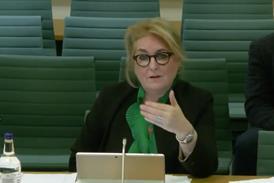Civil courts today move to a new charging regime introduced in weeks amid widespread condemnation from across the profession.
From 9 March the courts service will levy a 5% fee on all claims valued at more than £10,000, with the maximum fee capped at £10,000.
The changes were brought into force just seven weeks after they were announced and in the face of an ongoing legal challenge by the Law Society and other groups. There has also been opposition from the senior judiciary and representative groups for both claimant and defendant lawyers.
Practitioners last week reported a sudden surge in claims as lawyers rushed to take advantage of existing lower fees, fearing that otherwise they might be in breach of duty to their client.
The Ministry of Justice insisted that the courts would be prepared for this week’s new fees, which are expected to bring in £120m a year to help fund the courts service.
‘Changes have been made to HM Courts & Tribunals Service’s computer systems and relevant public-facing leaflets in readiness,’ a spokesman said. ‘We have also briefed court staff on the new fees.’
The Society has issued a pre-action protocol letter on the court increases, which amount to more than a seven-fold rise for claims valued at £200,000.
Law Society president Andrew Caplen said: ‘The government appears to be on a mission to turn the courts into a profit centre, amounting to a flat tax on those seeking justice.’
While the legal challenge continues, practitioners will have to either rely on litigation funders or after-the-event insurers or dip into their own reserves to fund claims.
Keith Etherington (pictured), Law Society council member for civil litigation, said: ‘The problem is firms are already working in overdraft – how can they fund cases up to £10,000? The MoJ says it is making savings but they will fall on to the NHS and local authorities when costs are recovered.’

























8 Readers' comments